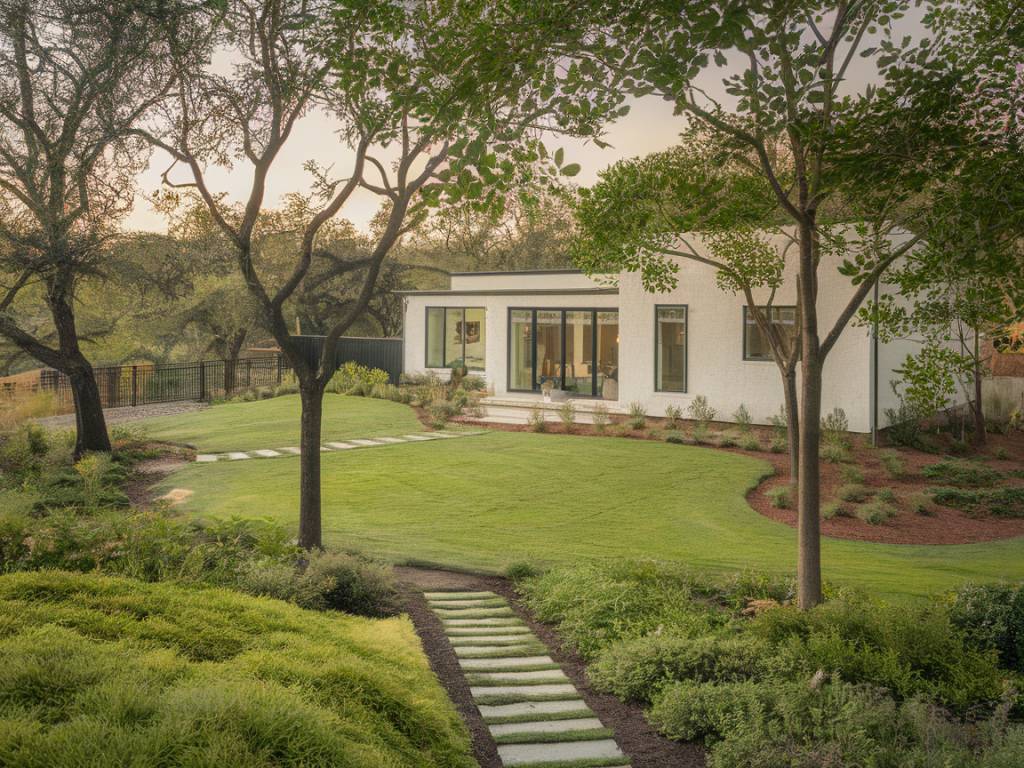Enhancing Your New Home with Smart Landscaping
Building a new home is an exciting adventure. But once the structure is up, have you thought about how your landscaping can enhance its beauty and functionality? The outdoor spaces surrounding your home are just as important as the indoor ones. Smart landscaping can add curb appeal, boost property value, and create a space where your family can relax and make memories. Ready to learn how to make the most of it? Let’s dive in!
Start with a Plan
Before you grab your shovel or start buying plants, take a step back. Like any other project, landscaping starts with a solid plan. Begin by assessing your outdoor space. How much sunlight does it get? Are there any slopes or drainage issues? What about the soil type? Answering these questions will help guide your decisions.
Think about how you want to use your yard. Do you picture quiet outdoor dinners, a safe play area for the kids, or perhaps a thriving vegetable garden? By understanding your needs and the potential of your space, you’ll avoid costly mistakes down the line.
Choose Plants That Complement Your Home
Your choice of plants can either highlight your home’s architecture or compete with it. For a modern home, think clean lines and minimalism—ornamental grasses or structured shrubs like boxwoods can work wonders. With a traditional-style house, consider colorful flowers or lush greenery to add that welcoming touch.
Opt for native plants as much as possible. They’re better adapted to the climate, require less maintenance, and are more sustainable. Plus, they often provide habitat for local wildlife—a double win!
Layer Your Landscaping
Layering your plants creates depth and visual interest. Use a mix of taller trees, medium-sized shrubs, and low-growing ground covers. A classic trick is to place taller plants at the back (or center, for an island bed) and shorter ones in front. Play with textures, colors, and bloom times to keep your landscape vibrant year-round.
Don’t neglect structure! Hardscaping elements such as pathways, retaining walls, or flower bed borders can guide the eye and give the space a polished look.
Make Your Entryway Pop
First impressions matter. Enhance your front yard to create a warm welcome for both you and your guests. Consider framing your front door with potted plants, designing a pathway lined with attractive lighting, or adding a splash of seasonal color with flower beds near the entrance.
Want something simple yet striking? A well-placed feature, such as a stylish fountain or a modern sculpture, can serve as an eye-catching focal point.
Think Functionality and Flow
Landscaping isn’t just about aesthetics—it should also serve a purpose. Define clear zones for different activities: a cozy seating area for conversations, open lawn space for kids to play, or tucked-away corners for gardening enthusiasts. Pathways can help connect these zones, making your outdoor space feel cohesive.
Pro tip: Use gravel or stepping stones for paths that are functional and stylish without breaking the bank.
Go Green with Sustainability
Eco-friendly landscaping allows you to create a beautiful environment while staying kind to the planet. Installing rain barrels or a drip irrigation system can reduce water waste. Incorporating drought-tolerant plants, sometimes called xeriscaping, can significantly lower your water bill.
Solar-powered outdoor lights not only elevate the ambiance but are also energy-efficient. Mulching your flower beds is another green trick—it helps retain moisture, cuts down on weeds, and nourishes the soil as it breaks down.
Don’t Forget About the Seasons
A common mistake is focusing solely on spring and summer blooms. While vibrant colors are delightful in warmer months, your garden shouldn’t feel barren in fall or winter. Mix in evergreen plants or trees with striking bark, berries, or unique branch structures to keep your yard appealing year-round.
Seasonal updates don’t have to be extensive—you can switch out potted plants or add seasonal decorations to maintain a fresh look.
Invest in Outdoor Lighting
Good landscaping doesn’t stop when the sun sets. Adding outdoor lighting can highlight key features, ensure safety, and create a cozy atmosphere for evening gatherings. Solar lanterns, string lights, or LED spotlights are popular choices.
Consider illuminating walkways, the front entry, and any standout plants or features like a pergola or water fountain. Well-crafted lighting can completely transform your outdoor space after dark.
Get Your Hands Dirty with DIY Features
If you’re feeling crafty, landscaping is an excellent opportunity to flex your DIY muscles. Create a raised garden bed out of reclaimed wood, build a small pergola for a seating area, or craft your own stepping stones with unique designs.
Even small weekend projects, like painting pots or building a bird feeder, can add personal touches to your landscaping—and might just become your new favorite hobby!
Know When to Call in the Pros
While many landscaping tasks fall into the DIY category, some projects may require professional expertise—think large-scale grading, installing irrigation systems, or laying heavy hardscaping elements. Don’t shy away from getting help if a project seems beyond your skill level. A professional touch can make a significant difference and save you potential headaches.
Keep It Simple and Maintainable
One common pitfall is overcomplicating the design. A new home often comes with plenty of tasks already on your plate, so make sure your landscaping is easy to maintain. Opt for low-maintenance plants, simplicity in design, and features that require little upkeep. The goal is to create an outdoor space you love, not one that adds stress to your to-do list.
Remember, landscaping is a journey, not a race. Take the time to enjoy the process—and be proud of the space you’re creating for your new home.
